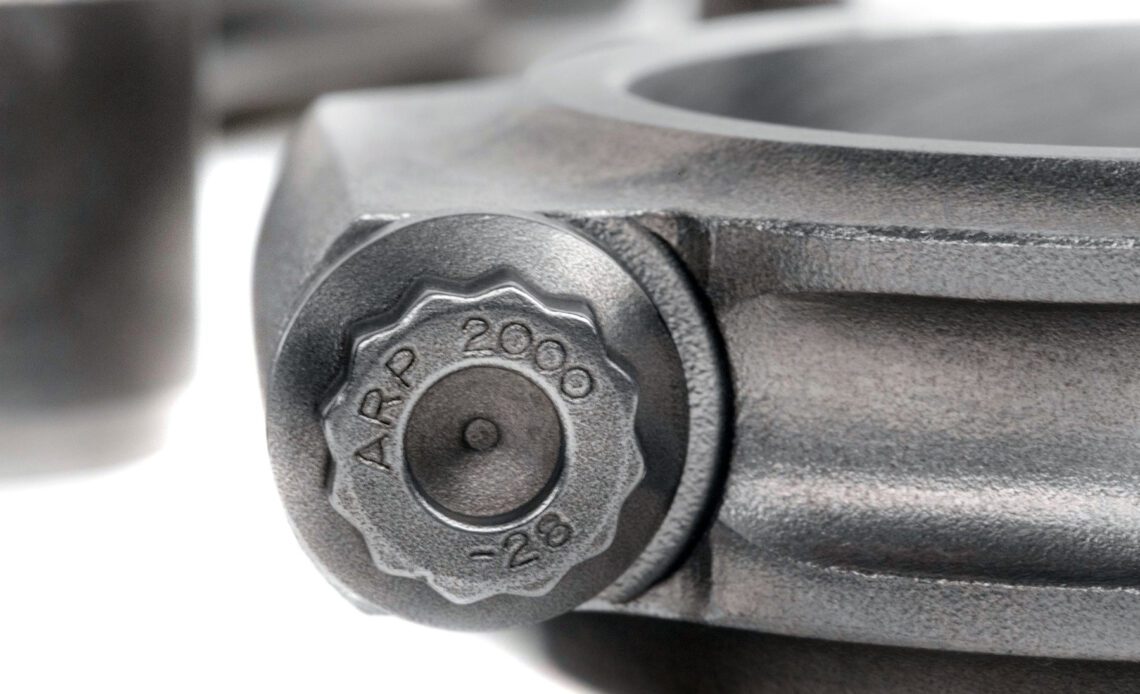The Automotive Racing Products (ARP) staff are pretty darn “geeky” when it comes to the science of working with varied metals to give them certain desired strengths or properties. Here are some key terminology nuggets from ARP that influence the design and manufacturing of their product lines.
Holding everything together, from your engine’s engine rod bolts to wheel studs, each can have a specific metallurgical composition for each different load and cycling application.
Grain Size
The importance of a metal’s grain size comes from the ways different alloys are cooled and form a grain pattern. For example, grains in cast metals are quite large. Grains can be refined (made smaller) by first cold working and then by recrystallizing at high temperature.
Smaller grain size equals stronger metals. Alloy steels, like chrome-moly, do not need any cold work to do this – reheat treatment will refine the grain size. All ARP bolts and studs are of a fine-grain – usually eight or finer on the ASTM scale, with 10 being the finest.
Metal Toughness vs. Brittleness
Recognizing the laws of nature concerning steel, as the strength goes up, the toughness decreases. At too high a strength, the metal tends to be brittle. And threads accentuate the brittleness. Tool steel, which can be heat-treated to 350,000 psi, would be a disaster as a bolt because of the threads.
Modulus of Elasticity
Metals are like a spring – if you double load on them, they will also stretch to a doubled factor. This metallurgy is important in connecting rod bolts because we are measuring the load by measuring the stretch.
ARP Fasteners utilizes the highest tech in metallurgical equipment to develop product and monitor quality control right down to the grain structure of the metals.,
The modulus of elasticity of all alloy steels is the same – 30,000,000 psi. Whether it is heat-treated or not, this modulus is true – whether it is a 100,000 psi strength level or 300,000 psi.
What is Chrome?
Chrome is the metal chromium best known for chrome plating. It is also used as an alloy addition to iron to form stainless steel. Stainless steel must contain at least 12-percent chromium. These low-chromium steels can still show rust on the surface. Using 18-percent chromium will make stainless steel more rust-resistant. In fastener applications, stainless exposed to oxygen at temperatures above 1200 degrees Fahrenheit will cause the chromium to join the oxygen and leave the surface depleted in…
Click Here to Read the Full Original Article at DragzineDragzine…

